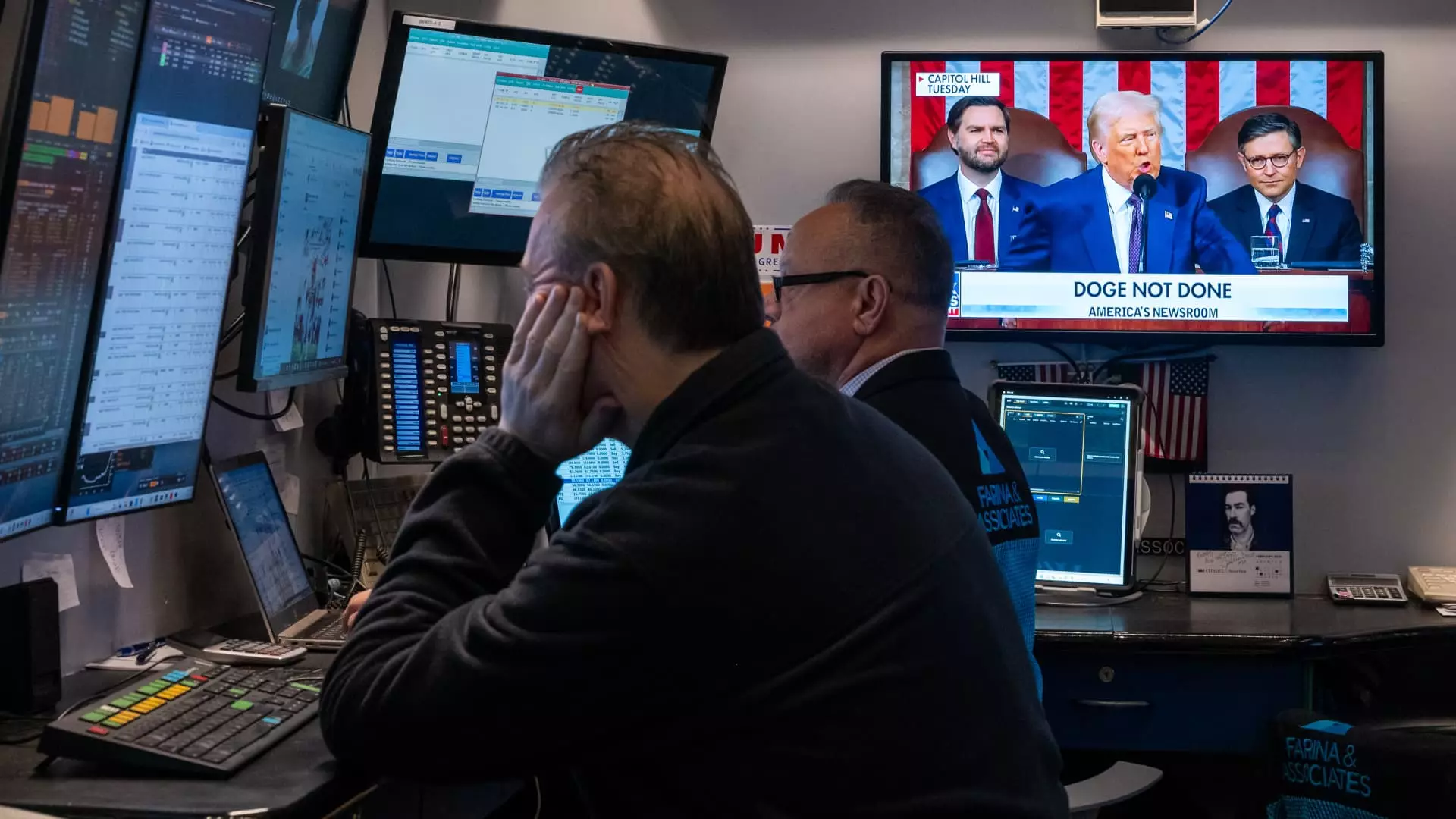In a climate where uncertainty reigns supreme, the financial landscape has become riddled with alarm bells. Analysts, strategists, and everyday investors are feeling the heat of geopolitical tensions, economic fluctuations, and unpredictable tariff implementations. Major financial institutions, including Goldman Sachs, are scrambling to provide solutions for nervous investors clamoring for protection against potential downturns. Enter products like the Goldman Sachs U.S. Large Cap Buffer 3 ETF, which promise both safety and upside opportunity amid this frosty climate. But one must ask: are such products genuinely effective, or do they simply mask deeper issues in our investment ethos?
Buffer ETFs: The Band-Aid Solution
Goldman Sachs’ new buffer ETF may appear to be a beacon of hope for investors seeking a “safe” haven. Designed to protect against downturns between 5% and 15%, while allowing for potential gains of up to 7%, this strategy might seem appealing. Yet, it raises significant questions about the overall investment philosophy we adopt in challenging times. After all, is the best approach to mitigate risk through complex financial products, or should we be investing in strategies that foster long-term resilience and adaptability instead?
This brings to light a problematic reliance on “buffer” solutions as if they are a panacea for a chaotic financial world. Using financial instruments as a safety net might suggest a lack of faith in the inherent growth potential of your investments. Investing should be about fostering growth and creating wealth for the long term, not simply hedging against losses in a reactive manner.
The Dependence on Historical Models
Bryon Lake, Goldman Sachs’ chief transformation officer, cites a track record of successful strategies underlying these buffer ETFs. While it is essential to respect historical data, we should be cautious about placing our blind faith in past performance as a predictor of future outcomes. The markets today are not what they were decades ago; the dynamics have fundamentally shifted. Changing consumer behaviors, disruptive technologies, and evolving geopolitical relationships pose risks that historical models may not adequately capture. The reliance on historical strategies might shield investors momentarily, but it can also perpetuate ignorance around emerging market realities that require fresh thinking.
The Psychological Impact of Uncertainty
Investors today are not just fighting market volatility but also a psychological battle against fear and uncertainty. The emphasis on downside protection through products like the Goldman Sachs buffer ETF may satisfy immediate concerns but risk fostering a defeatist mentality in investment. If investors constantly anticipate losses rather than focusing on growth, they may miss opportunities in a recovering economy. Resilience in investing should not only focus on protection but also encourage a bold approach to leveraging new opportunities amid chaos.
The real question for investors is whether they want to ride the waves of uncertainty with safety nets like buffer ETFs or embrace a more dynamic and proactive approach to their financial strategies. Understanding your financial goals and risk tolerance can empower you to navigate this tumultuous environment without relying solely on uncertain solutions that may do more harm than good.
In a world where investor sentiment can shift dramatically, the focus must pivot from merely creating financial products that soothe fears to encouraging a comprehensive understanding of the market’s complexities. Now is the time for investors to cultivate strategies that are as resilient as the markets are volatile, leading us to a brighter, more sustainable financial future.

